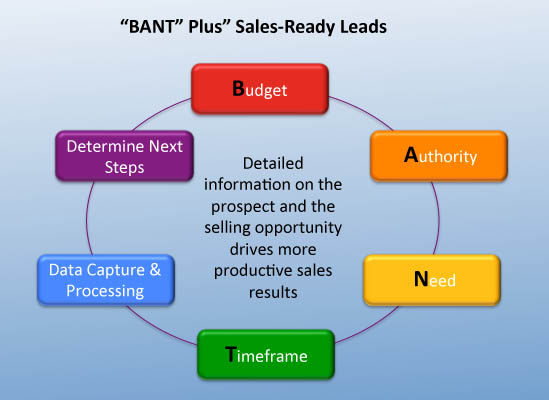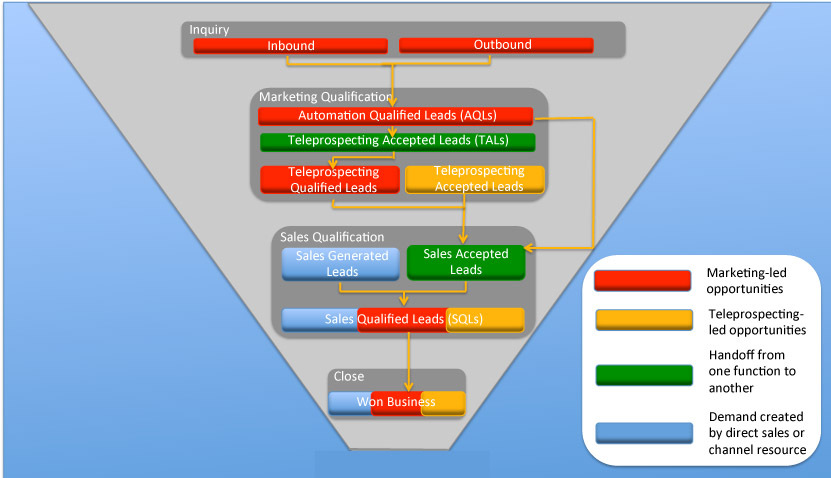 Many companies invest tens of thousands of dollars a year in marketing automation software. They are promised better tracking and easier nurturing. They’re made to feel that all they need to do is “use the system” and all of their marketing problems will be solved. This all sounds good and sells lots of software, except it doesn’t necessarily work that way. There are two reasons. First, prospects don’t always comply with filling out registration forms. Second, marketing automation software has a very difficult time identifying truly qualified prospects—the kinds the sales department really wants to call. In effect, companies are letting the marketing automation system replace good marketing strategy that seeks to provide a steady stream of leads that the sales department that will accept and act upon.
Many companies invest tens of thousands of dollars a year in marketing automation software. They are promised better tracking and easier nurturing. They’re made to feel that all they need to do is “use the system” and all of their marketing problems will be solved. This all sounds good and sells lots of software, except it doesn’t necessarily work that way. There are two reasons. First, prospects don’t always comply with filling out registration forms. Second, marketing automation software has a very difficult time identifying truly qualified prospects—the kinds the sales department really wants to call. In effect, companies are letting the marketing automation system replace good marketing strategy that seeks to provide a steady stream of leads that the sales department that will accept and act upon.
The whole premise of marketing through marketing automation software is: a) you will be able to identify your product purchase decision maker from a prospect list or inbound responders; and b) the prospect will respond to your offer and fill out a registration form to get that offer; and c) that prospect will be a qualified lead or can be nurtured through email and informational assets to become a qualified lead. These premises have some serious risks and flaws.
1. Prospects Are Rejecting Registration Forms
Prospects are increasingly rejecting filling out registration forms. We’ve seen a marked decrease in forms being filled out. Why? There may be a number of reasons. Perhaps they don’t want to be bothered by a sales person calling them. Or they aren’t ready to read or view your offer. Or, they get interested in your product and decide to go straight to the website. In these scenarios, they have completed evaded your marketing automation system. RELATED CLASS: B2B Landing Page Optimization
2. Prospects Are Stuck at the Top of the Funnel
Even if someone fills out the registration form that feeds into the marketing automation system, a minority will mature into sales-accepted leads. Why? Perhaps they are still researching their product decisions. Or they may be reviewing several products. Or they filled out the registration form for your offer, BUT they are not the individuals who really make the product purchase decision. What happens to them? They may get a few nurture emails, which they may or may not read. However, they stay stuck at the top of the funnel until you do something to move them down. RELATED CLASS: Creating a High Impact Demand Generation Strategy
Let’s say a campaign gets lots of leads coming into the marketing automation system. The “prospects” fill out the registration form for a white paper. They may even visit the website and view a video, which also gets recorded in their data record. The marketing automation software gets filled with thousands and thousands of leads rattling around in it. But the sales department will ignore 95% of them. Why? Salespeople will prioritize leads where they have some idea of budget, authority, needs and timeline for purchase…known in marketing circles as (BANT) criteria. It’s very difficult—if not impossible—to get prospects to tell you their BANT information through registration forms, even if they fill out multiple forms asking progressive questions. See Chart 1 for an illustration of BANT criteria.
Chart 1: BANT Plus Sales Ready Leads Criteria
So what has happened? Marketing automation has replaced a realistic marketing strategy. A realistic marketing strategy looks at the target marketplace and seeks to find prospects who meet the BANT criteria revered by Sales.
The Answer: Make Technology a Slave to the Strategy
How do we solve this problem? The answer is to make your marketing automation system a slave to the strategy. For inbound marketing, where you have leads coming in from various campaigns and events, feed them into the marketing automation system to nurture with a few email offers. But don’t sit on those laurels. Actively nurture them through a multi-touch teleprospecting effort, seeking to start a conversation. This can go in a lot of different directions. Some will fit BANT criteria right away and can be passed along to the sales department immediately. Most, however, will have various objections, or need further information, or may not be the decision-maker. Teleprospecting and email touches can provide them the additional information they may need. Or get a referral to the person who does make the product purchase decision. All the while, teleprospecting will be pushing more and more sales-accepted leads with detailed BANT criteria, to the Sales Department.
For outbound marketing, if on average .5% to 2 % of any prospect list immediately raise their hand by responding to your campaign and registering on a registration form, then you have a choice of accepting that mediocre inbound response—or doing something more about it. We suggest actively nurturing with multiple touches that include teleprospecting out to that list. Teleprospecting can uncover people in your list who didn’t recognize your initial campaign or respond to it. It can identify people on the list who aren’t the right decision maker, but who will refer you to someone who is. Or uncover people who may need your product but want more information before they can decide to proceed. With teleprospecting, you’ll find that any decent list can yield 5% to 10% qualified leads by actively teleprospecting into it and nurturing with calls and emails. In my experience, you’ll never get this kind of productivity through using marketing automation alone. The Demand Waterfall™ created by Sirius Decisions indicates that teleprospecting is a necessary step between marketing automation and the Sales Department, no matter whether you are doing inbound or outbound marketing. See Sirius’ Demand Waterfall™ in Chart 2.
Chart 2: Sirius Decisions Demand Waterfall ™
Source: Sirius Decisions
You might ask, ”Why do outbound campaigns in the first place if the real answer is to do teleprospecting?” We have found that the better the outbound campaign, whether it is an email—or even better, a combination of email and direct mail—the more productive teleprospecting will be. In fact, we’ve calculated teleprospecting to be 30% more effective with good quality campaigns going to the same contacts in advance.
Marketing automation software connected to sales force automation software can help you coordinate multi-touch marketing by maintaining and coordinating the database as you execute the nurturing and calling needed to gather BANT information and distribute it to Sales. This makes the software the “slave” of the strategy, rather than the replacement for the strategy—and accelerates lead generation goals more rapidly for higher sales.
Learn how to develop a marketing automation program that nurtures leads to revenue.
Watch Marketing Automation Tactics and Best Practices for Success, and marry your smart marketing strategy with an effective marketing automation program. You'll learn how to select the right solution, develop the right people with the right skills, and define your marketing automation implementation strategy. Get instant access now.

